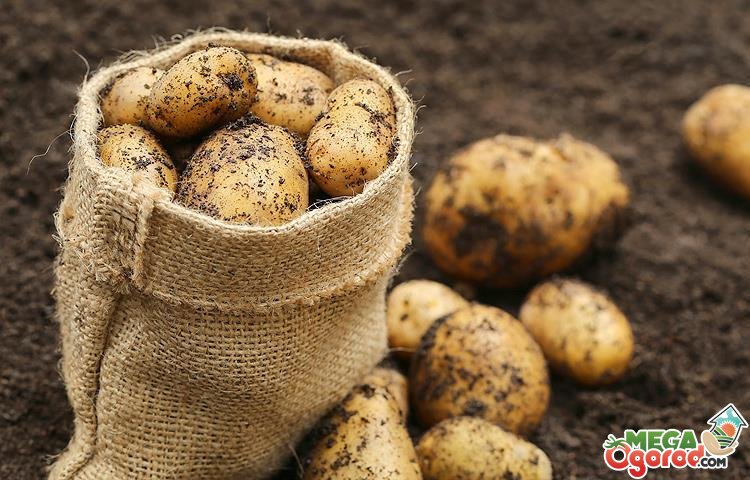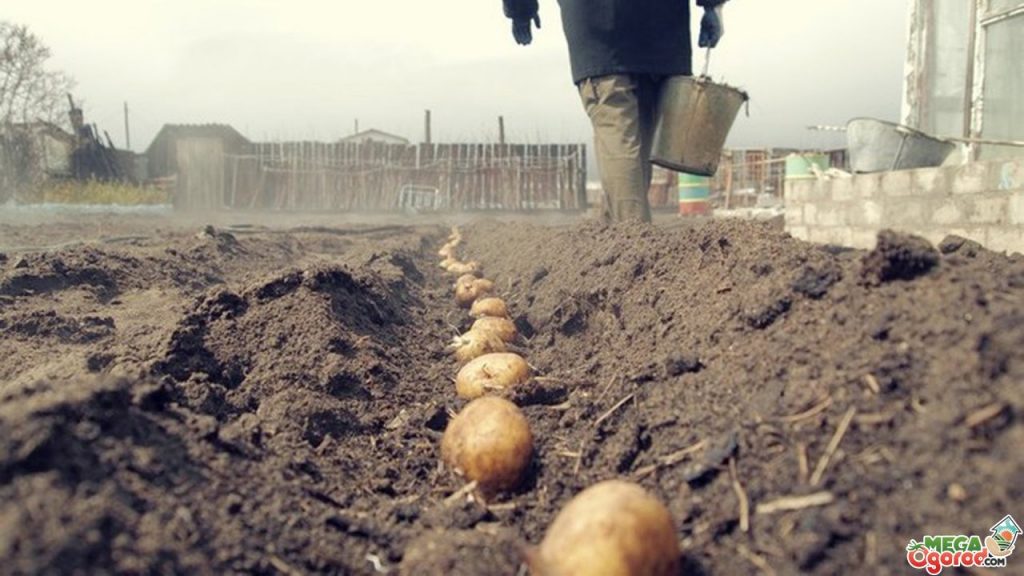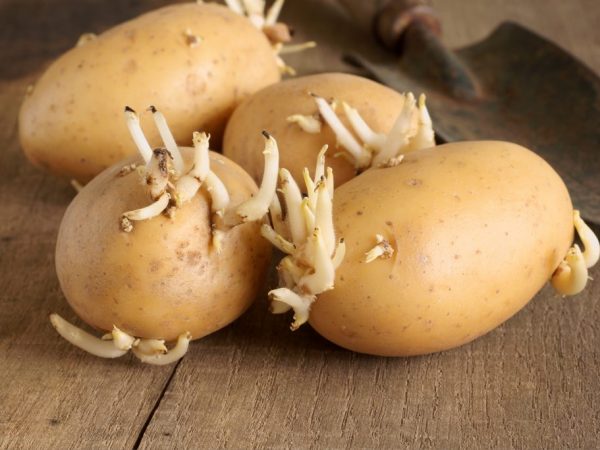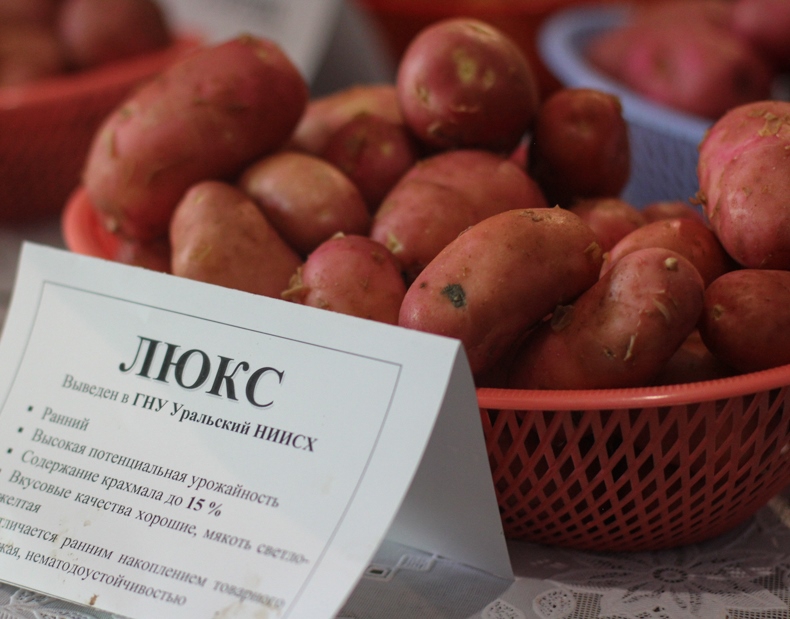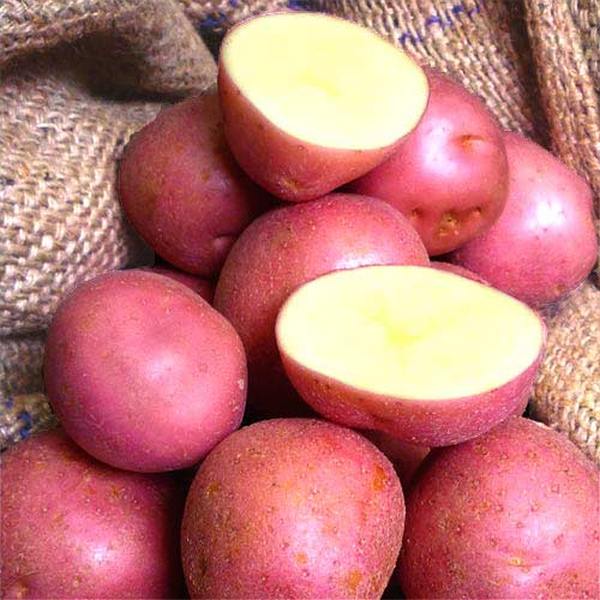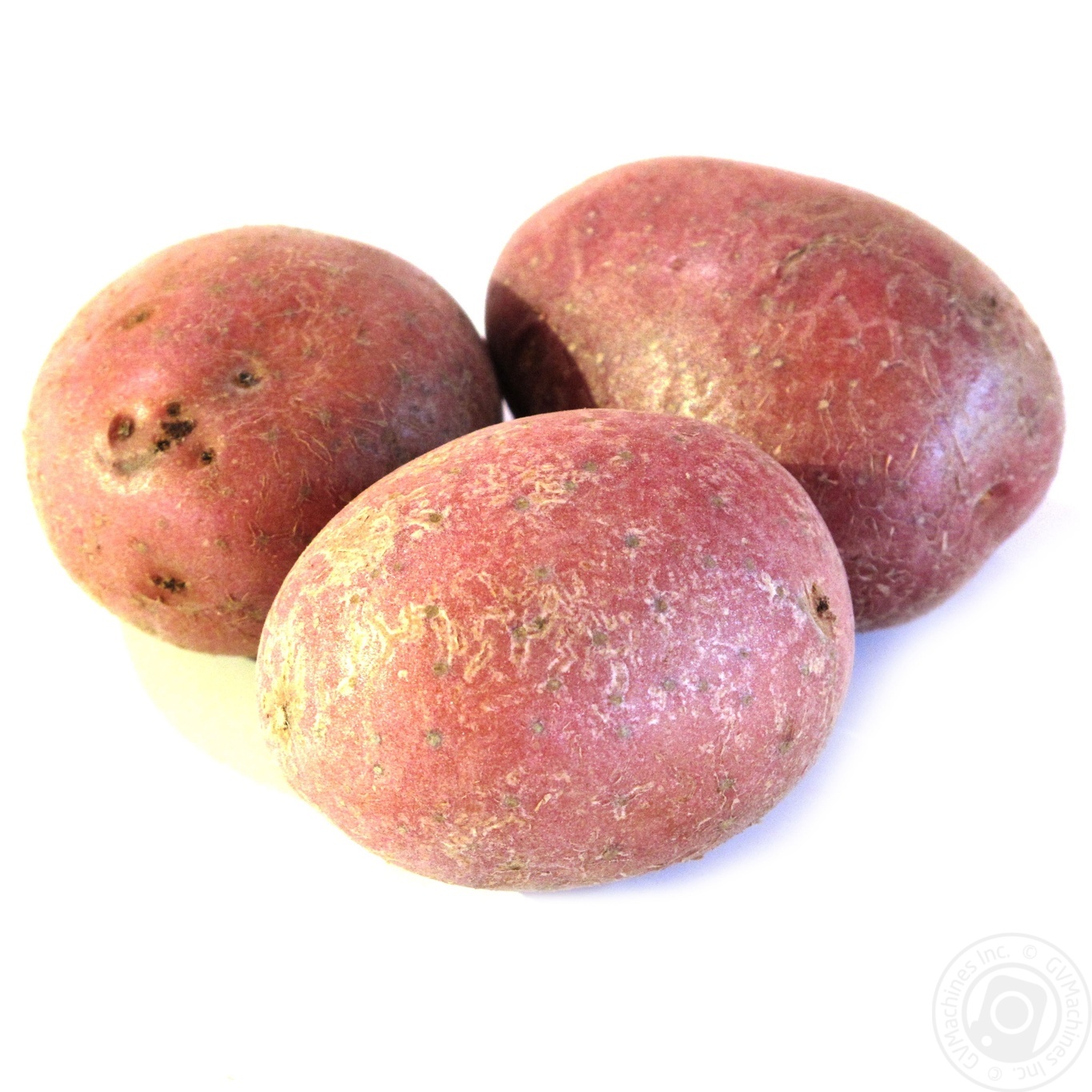Content:
- Molly variety
- Description
- Landing
- Care features
- Pre-emergence care
- A week after planting the tubers in the ground, the beds are harrowed with a rake or other devices. The procedure is repeated after the appearance of the first shoots. If frosts are expected, the rows should be tucked high and covered with foil or agrofibre.
- Watering and feeding
- Collection and storage of potatoes
- Diseases and pests
- Advantages and disadvantages
Originally from Germany, but having spread far beyond its borders, it is successfully cultivated in many countries. Molly potatoes have won the sympathy of vegetable growers for their excellent taste, high yield and resistance to diseases and weather conditions. This potato is often cultivated in farm fields, dachas and vegetable gardens.
Molly variety
The characteristics of the originator company in 2004 identified it as a canteen, and is capable of an early yield of the harvest. From the time of germination to maturity, the plant takes about 70 days, although the first formed tubers can be tried in 1.5-2 months.
To sell early products in the fields, farmers collect about 17 tons per hectare. When fully ripe, when the young potatoes are "stale" and gain weight, even more. Then the yield reaches 180-220 c / ha. With favorable weather and observance of agricultural technology, this parameter increases to 360 centners per hectare.
Any type of soil is suitable for growing potatoes, since the variety does not impose any special requirements on it. It is suitable for open field cultivation. But if you wish, to get early production, you can plant the plant in a polycarbonate greenhouse, under a film or agrofiber.
Description
Luxurious tall bushes reach a height of about 1 m. The leaves are large and bright, painted in a shade of light green. As the tops grow (it does it rapidly), the plant becomes more voluminous and spreading. It forms a small number of white flowers. At this time, under the bushes on the root fruit-forming shoots (stolons), the process of tuber formation takes place.
Usually the weight of each of them is approximately from 50 to 130 g, sometimes up to 170 g. Potatoes are evened out in size. The rounded-oval shape, yellow color of the pulp and rind with a barely noticeable mesh make the vegetable attractive in appearance. In combination with excellent taste, the variety is of interest for cultivation in private plots.
Due to the starch content, potatoes have a pleasant delicate taste, which is rated 4 points out of five possible. It is used for cooking, does not darken and does not disintegrate during cooking.
Landing
The quantity and quality of the future harvest of Molly, like other varieties of crops, depends entirely on the implementation of recommendations regarding the cultivation and care of her. When planning to plant potatoes, the first thing to think about is the area on which it will grow. It is better if siderates (mustard, alfalfa, clover), as well as cereals or plants from the legume family were sown in this place last year.
On the plot where they were planted Paslenovye, it is impossible to arrange potato beds for two reasons:
- Spores of fungal diseases and pathogens that they have in common could remain in the soil;
- In anticipation of the cold weather, pests (including the Colorado potato beetle) found refuge in the ground. In the spring, they will gladly settle on juicy green shoots.
Long before planting, in the fall, before plowing, manure or peat is introduced into the soil. You can fill in soil and compost if available. You also need to take care of the preparation of planting material in advance. For this, healthy tubers of standard medium size are selected. Some vegetable growers claim that it is still better to use larger specimens and recommend dividing them into parts, while leaving 2 or 3 buds on each.
Patient potato growers use seeds for propagation. But those who want to get a harvest in one year can buy varietal Molly nodules of the second or third "generation" in shops for gardeners and gardeners. Two weeks before planting, prepared potatoes lend themselves to vernalization: they are placed in a warm place, where direct sunlight does not penetrate.
A good effect is obtained by treatment with solutions of growth stimulants, which will make the kidneys "wake up". As a result of the process, strong shoots will appear.
Further, the potatoes are embedded in furrows or holes at a distance of 20-30 cm at a depth of 5-7 cm. Greater deepening is useless - it weakens the growth force. For convenience during processing, and also, taking into account the power and height of the bushes, no less than 0.7 m recede between the rows.
When exactly is the best time to plant depends on the region and its climate.
Care features
Agronomists and potato growers claim that Molly's potatoes do not require much maintenance. Still, certain activities must be carried out, then the plant will not need to spend energy fighting for survival and overcoming obstacles.
Pre-emergence care
A week after planting the tubers in the ground, the beds are harrowed with a rake or other devices. The procedure is repeated after the appearance of the first shoots. If frosts are expected, the rows should be tucked high and covered with foil or agrofibre.
Watering and feeding
Often there is no need to water this potato variety. The soil should be abundantly moistened twice or thrice a month. Moreover, it is better to do this early in the morning or in the evening, otherwise the soil surface will crack.
30 days after planting, simultaneously with watering, root dressings are carried out using:
- Chicken droppings, which are poured over with water and left to ferment. Then each liter of slurry is mixed with 1 bucket of water.
- Mullein, 1 liter of which is dissolved in 10 liters of water and brought under the bushes.
- Urea, to prepare a working solution, mix 10 liters of water and 1 tbsp. spoon of substance. Under each plant, apply half a liter of the resulting product.
- Green fertilizer formed as a result of the infusion of weeds. After fermentation, it is diluted in water and brought under the potatoes, bypassing the stems.
You can use a solution of ammonium nitrate (20 g per 10 liters of water). A good result is obtained by nitrogen, phosphorus and potassium fertilizers dissolved in 1 bucket of water, taken in a ratio of 1: 1: 2.
Foliar dressing is more effective. Getting directly to the vegetative parts of the plant, they activate metabolic processes and affect the formation of the crop. After feeding, the beds are watered, hilled, removing weeds.
Collection and storage of potatoes
Further care of the crop consists of watering, weeding and hilling.
After wilting and drying of the bush, the tops are mowed. After 2-3 weeks (during this period, the tubers ripen), harvesting begins. With the help of a shovel or mechanized devices, the potatoes are dug up. Tubers from under the most powerful and productive bushes are selected separately, they will go for seeds.
After digging, the potatoes are sorted, small ones are taken for feed for domestic animals. Large and medium - dried indoors without access to light.Otherwise, the tubers will turn green and become unusable for food.
Packing in nets or falling asleep in boxes and bins, they are stored in cellars, basements or pits. If it's an apartment, you can place the crop on the balcony, in the storerooms on the stairwells, under the sink, where it's cooler, or in the refrigerator. The keeping quality of the variety is 82%, this parameter is lower than that of the Nikulinsky and Krona varieties.
Diseases and pests
Molly's potatoes are not afraid of diseases. It is not susceptible to late blight, golden nematode and scab, which usually affects other varieties. For the prevention of fungal infections, the drug Fitosporin M. is successfully used. Suppressing and neutralizing fungal spores, it strengthens the immunity of the culture.
The main pest of this variety of potatoes (like others) is the Colorado potato beetle. An effective method of dealing with it is chemical preparations.
Wahright! The appearance of spots and damage on the leaf plate can be triggered not only by a fungal infection, but also by an excess of moisture and minerals.
Advantages and disadvantages
Compared to other varieties, Molly has a number of advantages:
- good taste and attractive appearance of tubers;
- unpretentiousness to the type of soil and watering;
- short ripening period and early return of the crop;
- high yield;
- long storage period;
- disease resistance;
- a high percentage of marketable tubers.
Summer residents and vegetable growers do not mention the disadvantages of this variety of potatoes. This indicates that the variety is really good and deserves the attention of potato lovers. For connoisseurs of ultra-early varieties, Molly is a godsend.
